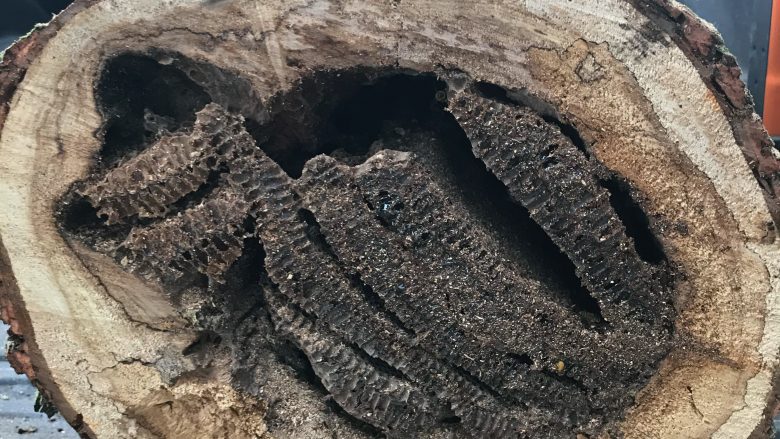by Mary Laura Fitzgerald
The call came in on September 16th last fall from a farmer in Massey on the Eastern Shore. He had cut down a tree, only to discover bees in it. Luckily, he decided to call a beekeeper to "re-home" the colony.
I’ve seen plenty of videos on cutouts from logs, so I headed over to take a look, optimistically hoping it was something I could manage (possibly with the help of a chainsaw owner).
After a crazy, conquering beekeeping summer last year, I was pretty much up for anything. The scope of the situation turned out to be daunting, however.
When I got onsite and looked at the cut tree, I had a lot to think about.
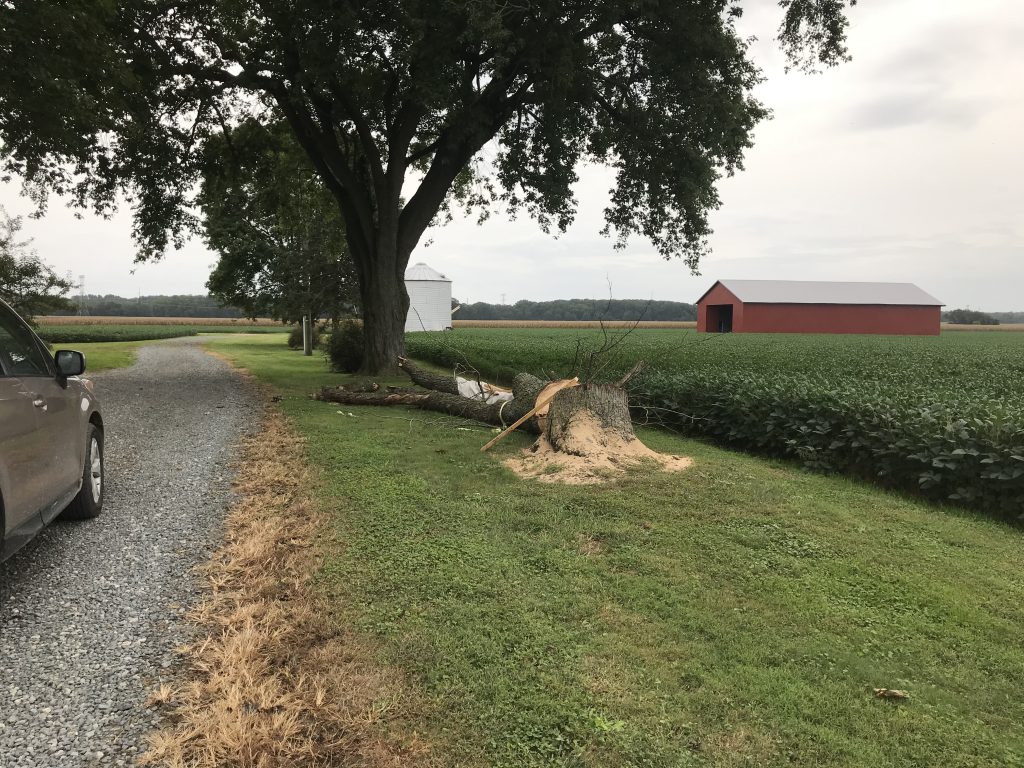
It was a big, beautiful colony with super sweet girls. It had to go because it was right up against a soy field, and the soy would need to come down eventually. It was starting to get cool for long, involved cutouts, and the farmer was eager to have them saved.
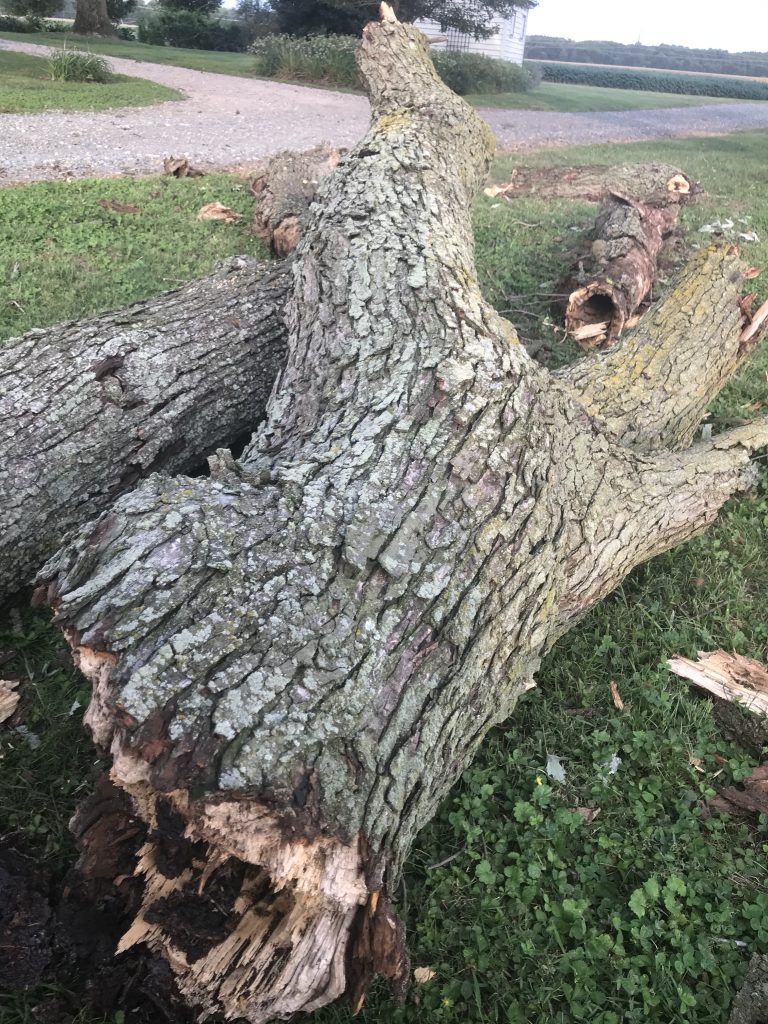
I covered the openings with a tarp to cut down on the possibility of robbing and headed home for a conversation with two experienced beekeeping friends. We all came to the conclusion this was probably more than I could handle alone.
I put out a request through the local Facebook group, asking for someone who would like to help me get them out of the tree, but I got no takers right away. Finally a response came in from Dave Elkner (President of the South Jersey Beekeepers and Second VP of the New Jersey Beekeepers Association). He suggested the whole log be moved and stood up for the winter, and kindly pointed out I had my work cut out for me! That was progress, but I still had a situation that was looking impossible for me to do. I was desperate to save those girls!
Happily, a short time later, Dave said he could come down and help, in exchange for grafting off the queen if they made it through the winter. That was one major hurdle, but there were still some major logistics to handle.
Dave is a busy man with over 100 hives of his own, and he lives in New Jersey. Not only that, we needed equipment, and the tree segment and colony had to be transported to my yard about 20 minutes away...OR, if we couldn't do that, we needed the farmer to agree that we could move it to an out of the way place on his farm and then come get it in the Spring.
The upcoming weather was looking bad, and my yard has a “moat” at the bottom of a hill which can be difficult to navigate when it’s muddy. I was super stressed, but I started chipping away at the details.
For one thing, I needed equipment, but the farmer had a variety of equipment that might move a hive, as well as a chain saw, and he was eager to help. He also thought that he could find a location on his farm if necessary. Dave was willing to carve out a small window of time early in the morning on a weekend. So the plans were firm!
I gathered up the things we needed, and nine days after the farmer’s phone call, we were ready to go. I texted the farmer the night before to remind him about the time and the equipment we needed. Dave’s son is in the military and was given unexpected leave that weekend, so Dave wanted to be in and out quickly, and on the way back home as soon as possible. Also, it was going to rain and Dave said the plans were off if it was raining. I didn’t sleep!
Early the next morning, I headed to Massey. It had rained, but stopped when I got there, though more rain was expected. Dave arrived and we headed up the lane.
But: No farmer, no equipment, rain clouds building up again! I tried calling, and there was no answer. Dave was looking ready to go, and I saw the whole rescue starting to crumble!
Finally, someone let the dog out at the farmer’s house, and the dog barked. The upstairs window shade shot up, and the farmer came down, dressing as he went. I started breathing again, and we were off!
The farmer was brave enough to wear my old jacket that wouldn’t zip while he sawed the tree down to the edges of the colony, and flattened the bottom.
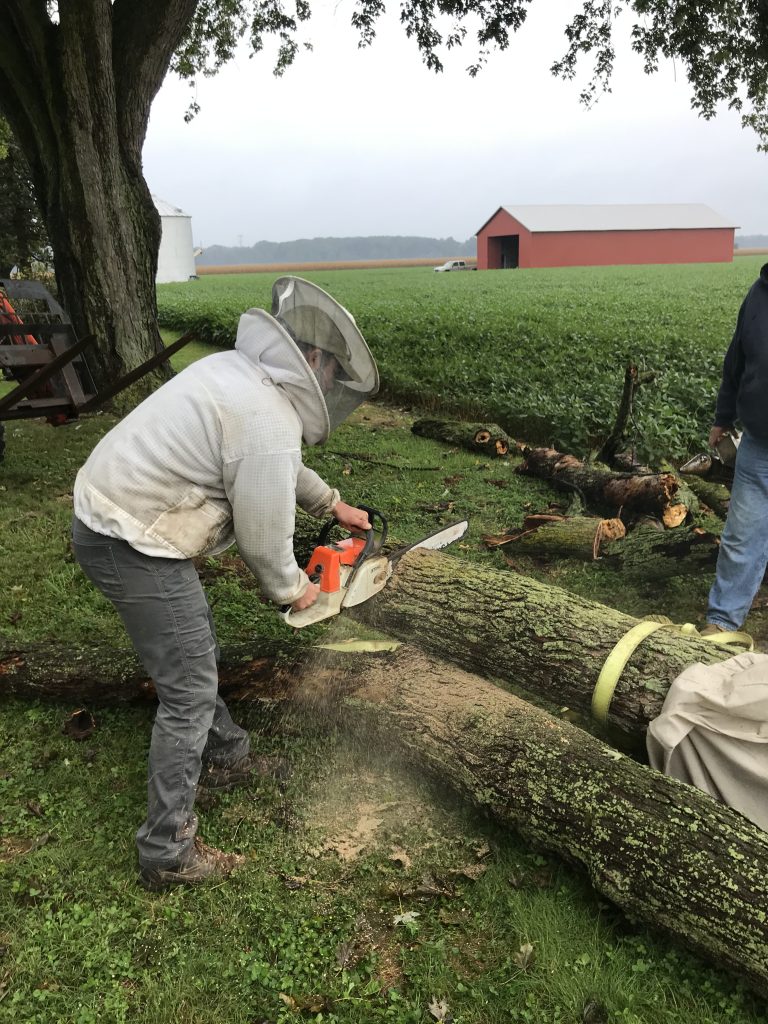
We got the tree up into the truck and screwed plywood on the bottom. It started to rain again, but stopped when we got to my yard, and David made it through the moat.
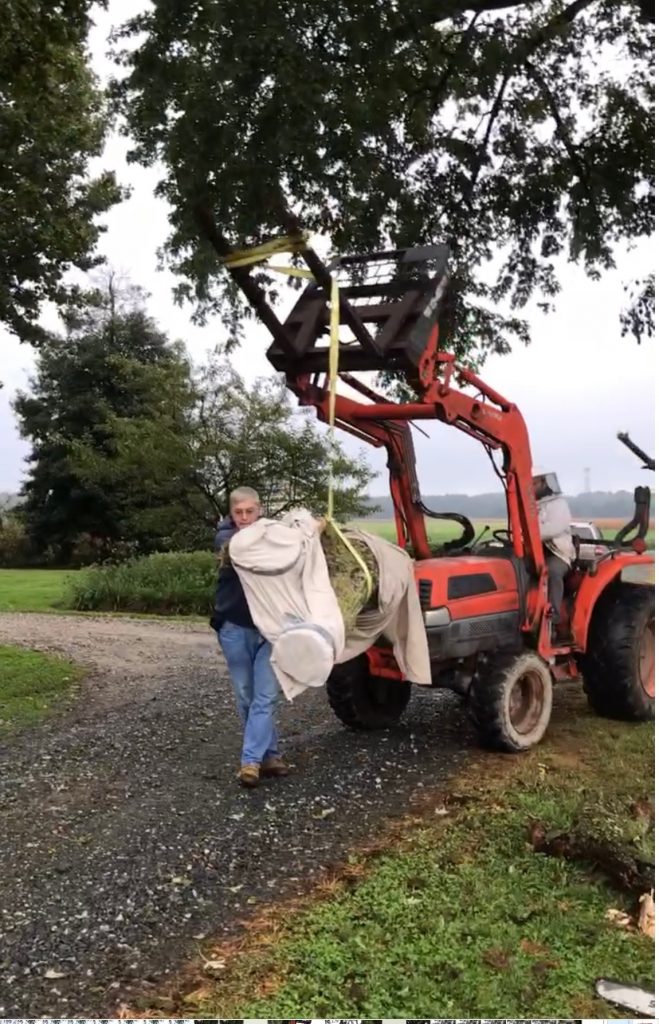
The last remaining tricky thing was for the two of us to slip the several-hundred-pound log out of the truck and land it perfectly on several cinder blocks. Once we pushed, there was no do over!
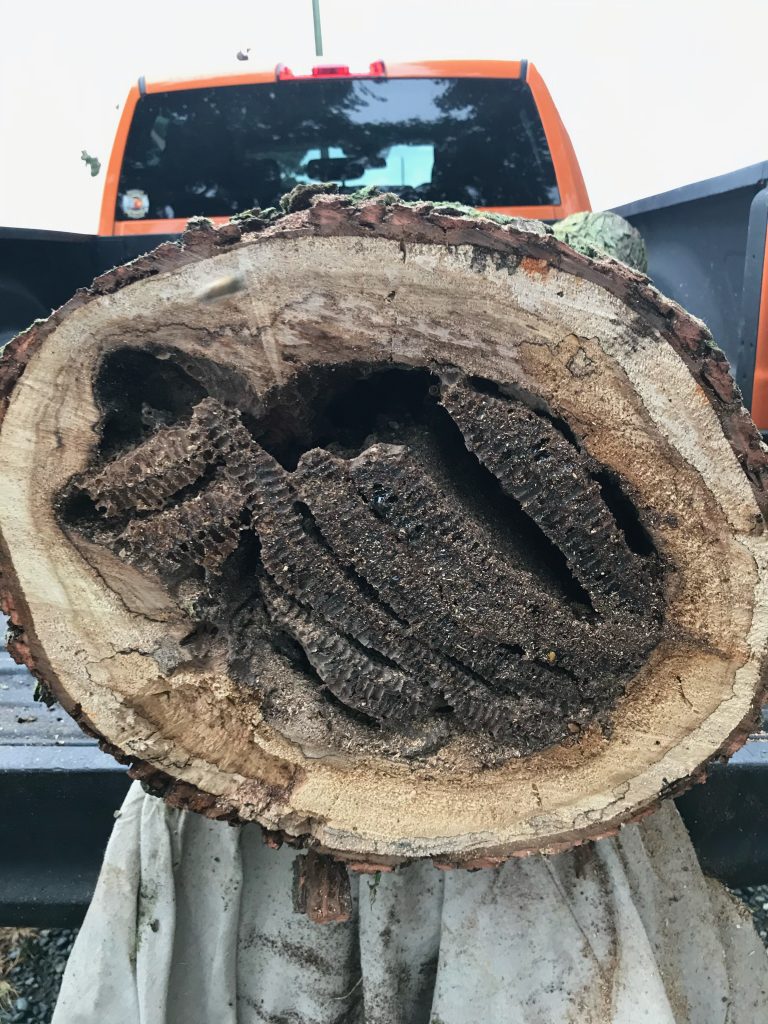
Thankfully, we landed it perfectly. So far, the log bees seem to be doing well!
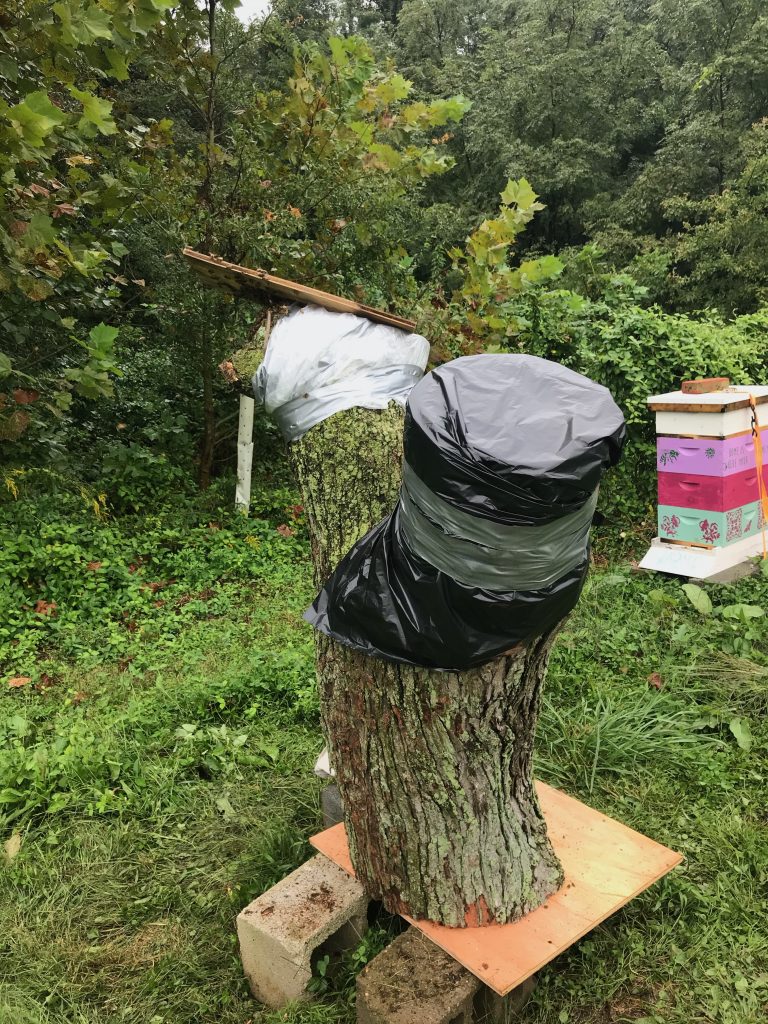
If they get through the winter, the next challenge will be getting them out of the tree, and Dave Elkner can do his well deserved grafting!

